There are some methods for integrating Ionic 2 App, Google Maps, and Geolocation. It can use native Android and iOS API or Web API. Right here, we will cover how to use Ionic Native Google Maps and Geolocation in Ionic 2 Maps app. As usual, we will starting to build Ionic 2 app from scratch. Before we started creating an app, first we have to set up Google Maps API in Google Developer Console.
Table of Contents:
- Setup Google Maps in Google Developer Console
- Create New Ionic 2 App
- Install and use Ionic Native Google Maps
- Test Ionic 2 Google Maps App on Device
- Display My Current Location on Google Maps
- Monitor Current Device Location and Display to Google Maps
Setup Google Maps in Google Developer Console
Go to Google Developer Console.
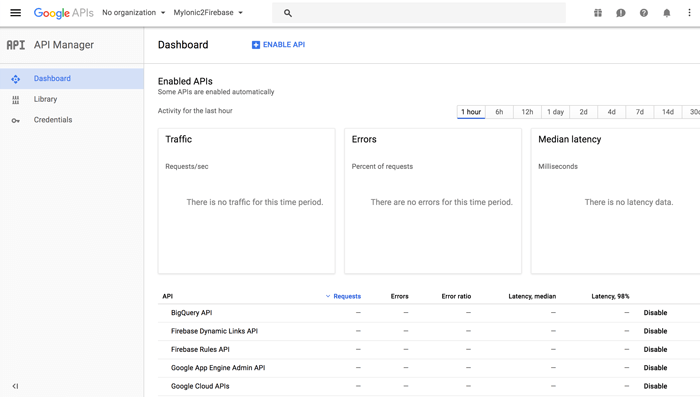
Create a project or use an existing project. Click "+ Enable API" button. Choose Google Maps Android API in the Google Maps APIs category.
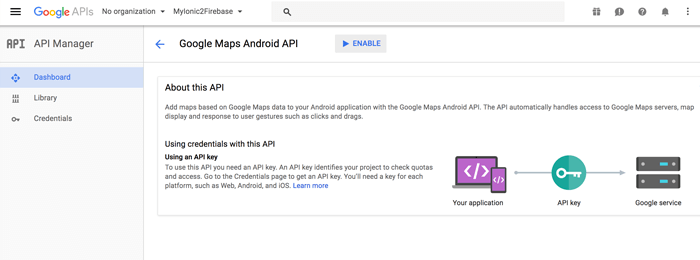
Click "> Enable" link. Now, click Credentials menu then click Create Credential dropdown.
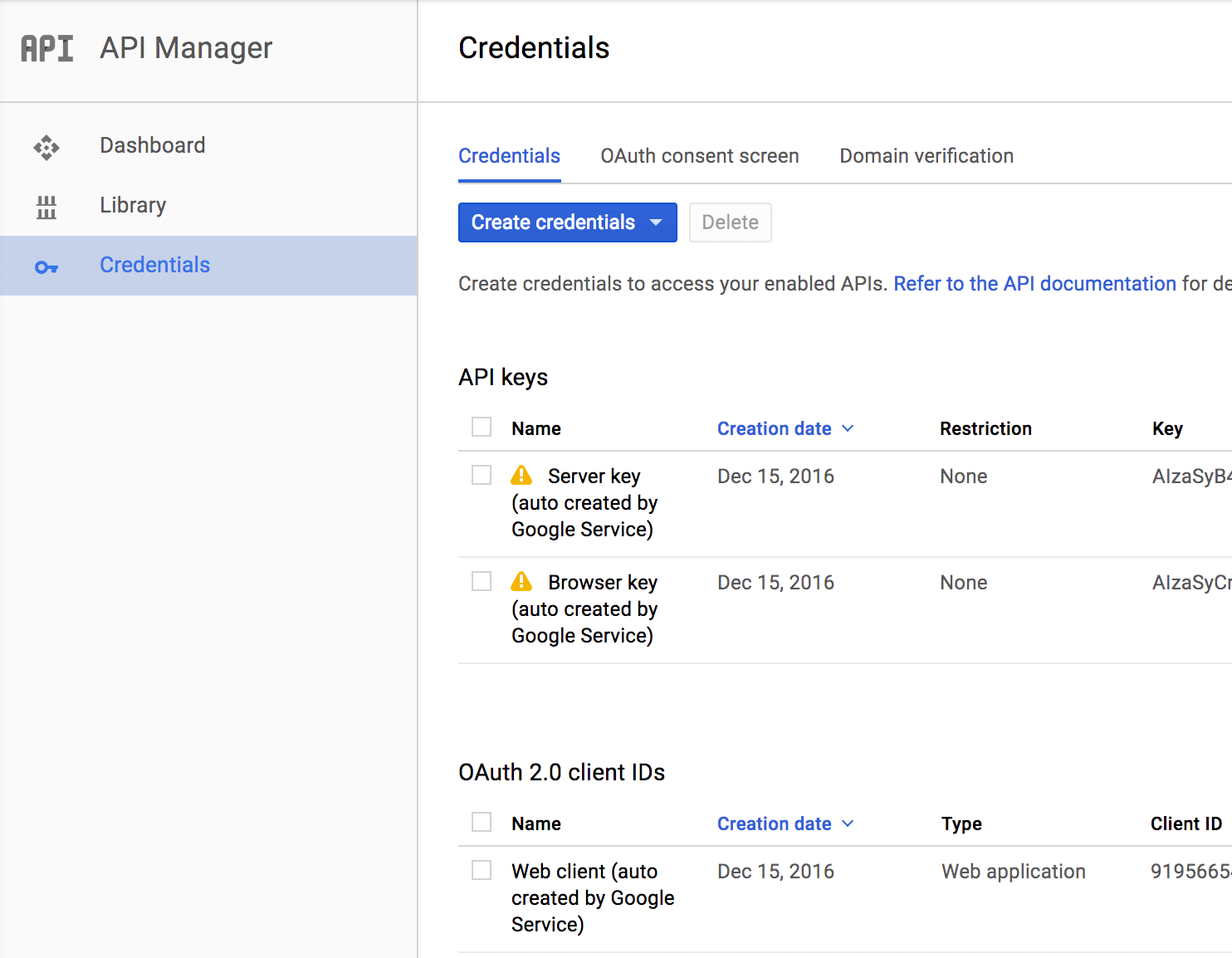
Click API Key, after API key created popup shown, copy and paste the newly created API key to your notepad then close the popup.
For iOS Google Maps SDK just enable it as the previous step but don't create API key again because we will use the same API for all platforms.
Now, Google Maps API is ready to use.
Create New Ionic 2 App
As usual, we have to create new Ionic 2 App. Open terminal or command line then go to the projects folder. Type this command to create a new Ionic 2 App.
ionic start Ionic2GoogleMaps --v2cd Ionic2GoogleMapsionic serve --l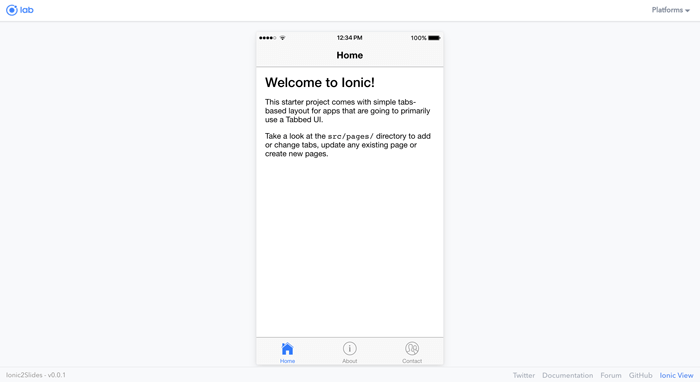
Install or reinstall all platform that we will build to.
ionic platform rm android
ionic platform add android
ionic platform rm ios
ionic platform add ios
Install and use Ionic Native Google Maps
For using native Google Maps with Ionic 2, install this plugin with this command.
ionic plugin add cordova-plugin-googlemaps --variable API_KEY_FOR_ANDROID="YOUR_ANDROID_API_KEY_IS_HERE" --variable API_KEY_FOR_IOS="YOUR_IOS_API_KEY_IS_HERE"npm install --save @ionic-native/google-mapsimport { NavController, Platform } from 'ionic-angular';
import { GoogleMaps, GoogleMap, GoogleMapsEvent, LatLng, CameraPosition, MarkerOptions, Marker } from '@ionic-native/google-maps';constructor(public navCtrl: NavController, private googleMaps: GoogleMaps) {}loadMap() {
this.map = new GoogleMap('map');
this.map.on(GoogleMapsEvent.MAP_READY).subscribe(() => {
console.log('Map is ready!');
});
}constructor(public navCtrl: NavController, public platform: Platform) {
platform.ready().then(() => {
this.loadMap();
});
}<ion-content padding>
<div #map id="map"></div>
</ion-content>page-home {
#map {
height: 100%;
}
}Test Ionic Google Maps App on Device
To test the app on the device make sure you connect data cable from the device to your laptop or PC. Now, we start to test for Android. Type this command to run on an android device.
ionic run android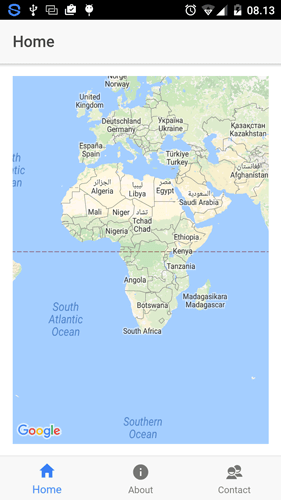
For iOS, there's a little complicated because we need to create provisioning profile in Apple developer console and also register app id. We are not cover it right now, but to run the app in iOS device working perfectly from XCode. Type this command to build iOS.
ionic build iosDisplay My Current Location on Google Maps
To get the current location of a device, we should install the Ionic Native Geolocation plugin first. Type this command to install this plugin.
ionic plugin add cordova-plugin-geolocation
npm install --save @ionic-native/geolocationimport { Geolocation } from '@ionic-native/geolocation';providers: [
StatusBar,
SplashScreen,
{provide: ErrorHandler, useClass: IonicErrorHandler},
Geolocation
]import { Geolocation } from '@ionic-native/geolocation';constructor(public navCtrl: NavController, public platform: Platform, private geolocation: Geolocation) {
platform.ready().then(() => {
this.loadMap();
});
}loadMap() {
this.geolocation.getCurrentPosition({ maximumAge: 3000, timeout: 5000, enableHighAccuracy: true }).then((resp) => {
console.log(resp.coords.latitude+", "+resp.coords.longitude);
let location = new LatLng(resp.coords.latitude, resp.coords.longitude);
this.map = new GoogleMap('map', {
'backgroundColor': 'white',
'controls': {
'compass': true,
'myLocationButton': true,
'indoorPicker': true,
'zoom': true
},
'gestures': {
'scroll': true,
'tilt': true,
'rotate': true,
'zoom': true
},
'camera': {
'latLng': location,
'tilt': 30,
'zoom': 15,
'bearing': 50
}
});
this.map.on(GoogleMapsEvent.MAP_READY).subscribe(() => {
console.log('Map is ready!');
});
}).catch((error) => {
console.log('Error getting location', error);
});
}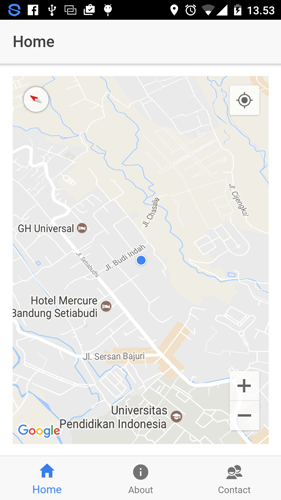
For running on the iOS device you can refer to the previous chapter.
Monitor Current Device Location and Display to Google Maps
Another feature from Geolocation is watching location. It means when the device moving to another place Google Maps will always update the location of the current device. To do that just change the constructor to be like this.
constructor(public navCtrl: NavController, public platform: Platform, private geolocation: Geolocation) {
platform.ready().then(() => {
//this.loadMap();
let watch = this.geolocation.watchPosition();
watch.subscribe((data) => {
let location = new LatLng(data.coords.latitude, data.coords.longitude);
this.map = new GoogleMap('map', {
'backgroundColor': 'white',
'controls': {
'compass': true,
'myLocationButton': true,
'indoorPicker': true,
'zoom': true
},
'gestures': {
'scroll': true,
'tilt': true,
'rotate': true,
'zoom': true
},
'camera': {
'latLng': location,
'tilt': 30,
'zoom': 15,
'bearing': 50
}
});
this.map.on(GoogleMapsEvent.MAP_READY).subscribe(() => {
console.log('Map is ready!');
});
});
});
}This is just simple example of using Google Maps and Geolocation, feel free to give us suggestions or error report to improve this tutorial.
Source Code on Github.
We know that building beautifully designed Ionic apps from scratch can be frustrating and very time-consuming. Check Ionic 4 - Full Starter App and save development and design time. Android, iOS, and PWA, 100+ Screens and Components, the most complete and advance Ionic Template.
That just the basic. If you need more deep learning about Ionic, Angular, and Typescript, you can take the following cheap course:
- IONIC 4 Design Hybrid Mobile Applications IOS & Android
- Wordpress Rest API and Ionic 4 (Angular) App With Auth
- Mobile App from Development to Deployment - IONIC 4
- Ionic 4 Crash Course with Heartstone API & Angular
- Ionic 4 Mega Course: Build 10 Real World Apps
Thanks.
